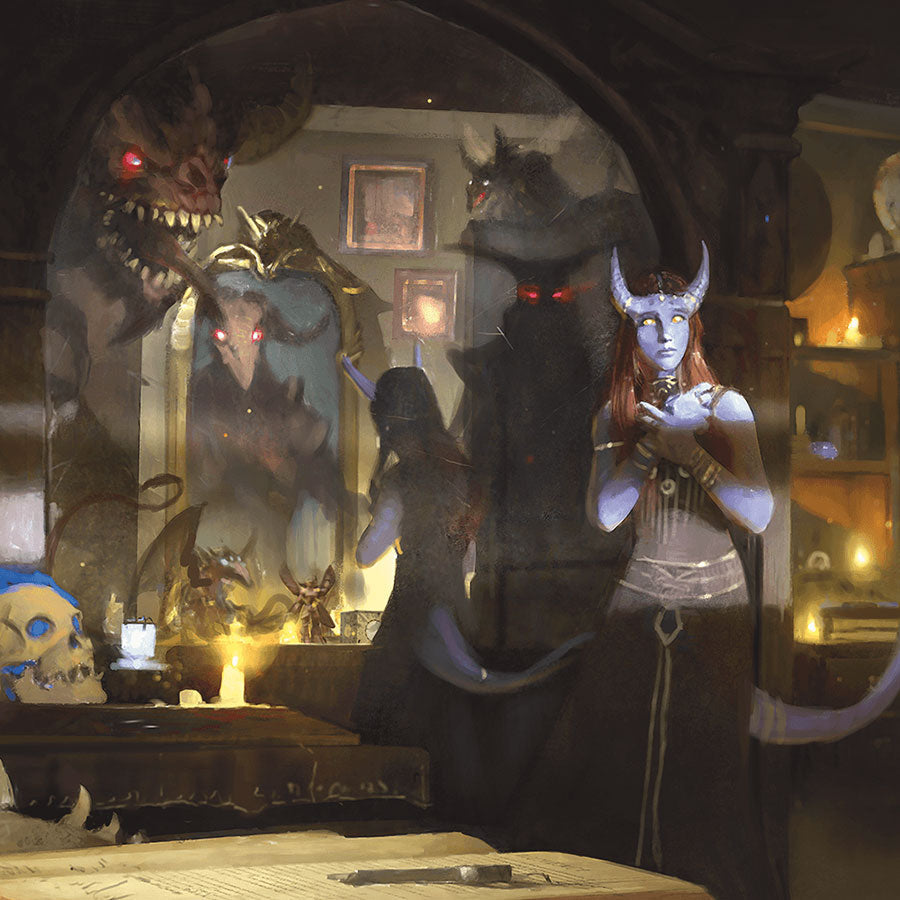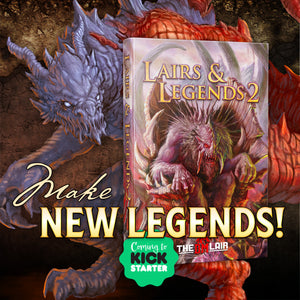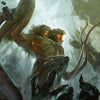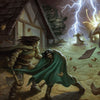7 Ways to Make D&D Villains Like the Pros

Written by Luke Hart
Here’s the thing. We see professional game masters on TV and tend to hold them up on a pedestal. We think that they are better than us—that we could never be as good as they are. It’s like they have a secret sauce or magic that sets them apart.
However, the truth is they’re just the same as you and me. Flesh and blood people. Yes, they are outstanding game masters, but not because they have a golden touch. They excel at their craft the same way any outstanding game master does: by implementing tried and true strategies and techniques. They do the right things well.
The same is true when it comes to villains: pro GMs make villains just like any other good game master would; the only difference is that their villains get a lot more exposure. So, if you apply the 7 villain-crafting techniques that we hit on today in your own games, your villains can be just as good as theirs.
By the way, if you're looking for a low level pre-made adventure module for your D&D 5e game, I highly recommend Into the Fey. It's designed for levels 1 to 5, features tricksy fey and their sly schemes, and contains everything you need to play!
Watch or listen to this article by clicking the video below.
#1 Tropes and Archetypes
Both Brennan Lee Mulligan and Matt Mercer excel at using genre tropes and archetypal villains to create compelling stories. Archetypes—such as the mastermind, trickster, tyrant, beast, femme fatale, and misguided zealot—connect with universal human experiences, making villains relatable and memorable. Resources like the TV Tropes page I’ll leave a link for down below or a quick Google search for "villain archetypes" offer hundreds of ideas to inspire your game.
For example, Matt Mercer’s Chroma Conclave (Campaign One) and Brennan Lee Mulligan’s dragon in Fantasy High both hit “The Beast” trope, tapping into the fear of a red dragon, and “The Boogeyman,” driving personal stakes with past trauma. The dragon immediately inspires fear while the boogeyman pushes the character to a desire for vengeance or justice.
Remember, tropes evoke strong emotions, but avoid overusing them to the point of cliché. Balance is key!
#2 Sympathetic Villains
Pro DMs like Matt Mercer and Aabria Iyengar create villains who could easily be seen as heroes from another perspective. These villains don’t see themselves as evil—rather, they believe they’re doing what’s right, while the characters opposing them are the true antagonists.
Sympathetic villains often have motivations rooted in their environment, a tragic backstory, or manipulation by a dark force, like a false prophecy or a malevolent god. To make them compelling, give them a clear, relatable motivation and provide ways for the players to uncover their backstory—brief but impactful storytelling is key.
Take Delilah Briarwood from Critical Role’s Wintermount arc: Delilah, an archmage, made a deal with The Whispered One to save her dying husband, turning him into a vampire. Her actions, though horrific, were driven by love and desperation. Players can understand her reasoning, even as they work to stop her plans, making her a layered, memorable villain.
#3 Villains Reinforce the Theme
Brennan Lee Mulligan is a master at aligning villains with a campaign's theme. In Fantasy High, the theme of "coming of age" isn’t just seen in the high school setting but also in its villains. Take Lunch Lady Doris and her corn gremlins—on the surface, it’s absurd, but it taps into a universal high school experience: suspicion of the disenchanted lunch lady who “might be doing something to the food.” This reinforces the theme as the characters confront childhood fears and grow.
If you have a campaign theme, tie it to your villains. For example, if your players’ characters share overconfidence, create a pride-driven villain to reflect and challenge that trait. If their backstories share a theme of loss, introduce a villain whose actions stem from a similar loss. The result is a more cohesive story and a villain who feels deeply connected to the characters and the campaign.
#4 Tie Villains to Characters
The best pro GMs, like Matt Mercer and Brennan Lee Mulligan, make their villains personal by connecting them to the characters’ backstories. When a villain directly impacts a character’s history, it creates emotional stakes. Examples abound: the red dragons in Critical Role killed the characters’ parents, the Briarwoods killed a character’s family and forced him to run from his home, and Fantasy High’s friendly assistant principal secretly became the Big Bad.
Even in published adventures, this isn’t as hard as it seems. Joe O’Brien of the Glass Cannon Network proved this in Delta Green: Impossible Landscapes. He turned a minor villain—a mysterious clockwork craftsman—into a former contact of a PC. This small change made the villain deeply personal and unforgettable.
Whether it’s rewriting a villain’s backstory or connecting their goals to a player’s, tying villains to characters transforms them from generic enemies into emotional, impactful adversaries.
#5 Plan Your Villain’s Tactics
Know your villain’s abilities and how they’ll use them effectively. Aabria Iyengar has shared her method of prepping "cheat sheets" for villains, outlining action flowcharts based on combat scenarios. For example: “Get angry, take two actions, teleport to a defensible spot, and mock the party’s efforts.”
This prep ensures the villain acts with purpose and feels dynamic, making combat memorable. Whether they’re strategically retreating or unleashing a signature ability, having a plan keeps them effective while showcasing their personality and motivations. A little preparation goes a long way in creating a villain who’s both challenging and cinematic.
#6 Make Your Villains’ Actions Matter
Just as players’ actions shape the world, your villain’s actions should do the same. Their plans should have meaningful stakes—if the characters fail to stop them, something significant (and likely terrible) happens. Whether it’s a kingdom falling, a village being destroyed, or a god ascending, the villain’s influence should be felt.
This creates investment, both for players and, in actual plays, the audience. High stakes make the villain’s presence tangible and their defeat satisfying. A villain whose actions drive the story forward ensures they’re more than just an obstacle—they’re a force the players must reckon with.
#7 Don’t Get Too Attached
Matt Mercer advises: don’t cling too tightly to your villain. Their purpose is to challenge the players and, ultimately, be defeated. The party will likely kill them, maybe sooner than you expected. That’s part of the fun—it’s the characters’ story, not the villain’s.
If the players succeed earlier than planned, roll with it. If you want to bring the villain back, make sure it enhances the story instead of feeling forced. Think resurrection with consequences or a legacy left behind, but avoid cheap tricks that make players roll their eyes. Flexibility keeps the game exciting and engaging.
Confront Devious Fey and Their Tricksy Plots!
For years, the fey creatures inhabiting Pelview Grove to the north and Pelfell Bog to the east have not been a source of trouble, though perhaps they were a shade too mischievous at times. That has now changed.
Beset on all sides by a variety of issues -- childish pranks gone wild, dwarves forced out of their own brewery, and farmers missing -- the Aeredale guard is looking for help from local adventuring parties to set things right.
For those brave souls who accept the call to adventure, it'll be time to go into the fey.
If you’re looking to start up a new 5e campaign or reboot your current one, Into the Fey may be exactly what you need. Designed for levels 1 to 5, Into the Fey contains everything you need to start playing:
- Eleven fey-themed adventures for level 1 to 5 adventuring parties
- Over 40 new fey monsters
- The fully fleshed-out town of Aeredale
- Maps of Aeredale, the surrounding region, and the Fey Plane
- Player handouts
- Hag potion system
- 15 new fey magic items
- JPG image files of all Into the Fey adventure maps, including GM versions and gridded/non-gridded player versions
- JPG images files of all Into the Fey world maps
- Digital tokens of Into the Fey NPCs and monsters
Pick up the Into the Fey Ultimate Bundle to get the hardcover, the PDF, digital maps, and digital tokens.
Starting a new campaign can be tons of work; let Into the Fey do some of the heavy lifting for you!
-
Posted in
Game Master How-To Articles







